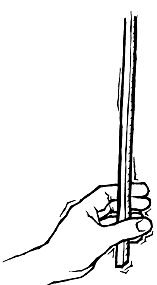

 |
Why in the world do we sneeze, cough, yawn, blink, and belch? How do these reflex actions help protect us? |  |
Reflexes
Why does a doctor test my reflexes when I have a check up?
![]() Peggy learns about reflexes from some very young experts.
Peggy learns about reflexes from some very young experts.
Segment length: 6:30
Sneezing, coughing, and blinking are simple reflexes. But they aren't as simple as they seem.
It's true that reflexes have a simple definition. They're involuntary actions or movements that occur in response to a stimulus. And you may not think that much goes on when you yawn, for example. But you might be surprised.
Each reflex action can involve countless complex communications and
intricate coordination among nerve cells called neurons. These neurons
are found in the central nervous system, which includes
your brain and spinal cord, and the peripheral nervous
system, which includes all the nerves that reach your body's extremities.
Not all neurons are alike, however.
But why is the brain involved in reflex actions at all? As part of the nervous system, the brain has specialized functions, only some of which control thought or voluntary movement. The brain stem, for example, manages involuntary reflexes such as breathing and keeping our balance. We don't consciously decide to do these things. But a part of our brain is still involved.
Reflexes serve as primitive responses that protect our bodies from danger and help us adjust to our surroundings. We cough, for example, when an irritant enters our windpipe and we need to expel it through our mouth. We sneeze when we need to clear our nasal air passages of irritants and allergens. We blink when danger threatens the sensitive tissues of the eye and when we need to moisten and clean the cornea. (This reflex occurs 900 times an hour!) We yawn when nerves in the brain stem find there's too much carbon dioxide in the blood. A yawn makes the muscles in our mouth and throat contract and forces our mouth wide open, allowing us to expel carbon dioxide and take in a large amount of oxygen-rich air.
Without these reflex actions, we would be unable to survive. So even though they may be simple, these reflexes are a really big deal.
Connections
1. What other reflex actions do we have? How do they protect us? Which
reflexes can we control more than others?
2. If you could design new reflexes for yourself, what would they be?
afferent carrying toward a given point
central nervous system the part of the nervous
system in vertebrates that consists of the brain and spinal cord
efferent carrying away from a given point
interneurons connecting neurons
patellar tendon reflex knee-jerk reflex
peripheral nervous system nerves and nervous
tissue outside the central nervous system
receptor specialized cell or ending on a sensory neuron that a stimulus
can excite
synapse tiny gap between the axon of one neuron and the cell body
of another neuron across which messages are transmitted chemically or electrically
Additional resources
Additional sources of information
A Nervewracker
Pit your reflexes against the clock in this reaction-time challenge.
How fast do your nerves send and receive messages? Involuntary reflexes are very fast, traveling in milliseconds. The nerve impulses in the neurons that control these reflexes travel an express route. In fact, the fastest impulses reach 520 kilometers (320 miles) per hour! Our conscious muscular response to a stimulus takes a much longer route. See just how fast your brain and nerves respond to stimuli in this experiment.
Materials
Questions
1. Are there differences in reaction times between right- and left-handed
people? Between genders? Between younger and older people? Experiment with
test groups. What accounts for any differences?
2. How can you improve your reflex reactions? Test your theories. What
can you conclude about the effects of practice and fatigue on reaction
time?
Adapted in part from A+ Projects in Biology by Janice VanCleave. Published by John Wiley & Sons, Inc. (1993).

![]()
Check your knee-jerk reflex. Ask a partner to sit on the edge of a table
with legs hanging freely. Use the side of your hand to chop lightly at
your partner's leg just below the kneecap (patella) at the patellar tendon.
Switch places and repeat the experiment. What could you do to prevent this
reflex from happening?
![]()
Research a disease that affects our reflexes, such as polio or amyotrophic
lateral sclerosis (ALS, for short). Read the inspiring stories of people
who suffered from these diseases-for example, Franklin Delano Roosevelt,
Lou Gehrig, and Stephen W. Hawking.
![]()
Hold a pane of clear plastic or Plexiglas in front of your face, with your
nose touching it. Have someone throw a crumpled ball of paper at the plastic,
aiming at your eyes. Can you control your blinking reflex?
![]()
Hold a ruler horizontally just below your eyes, resting it on the cheekbones.
Close your eyes for a minute. As you open them, have a friend shine a flashlight
directly into your eyes and measure the distance the pupils contract. Test
to see if this pupillary reflex works with both eyes or just the eye exposed
to the light. Why does this reflex occur?
Tapes of this episode of Newton's Apple and others are available
from GPN for only $24.95.
Please call 1-800-228-4630.
For information on other Newton's Apple resources for home and school,
please call 1-800-588-NEWTON!
 We encourage duplication for educational
We encourage duplication for educational Newton's Apple is a production of KTCA Twin Cities Public Television.
Made possible by a grant from 3M.
Educational materials developed with the National Science Teachers Association.